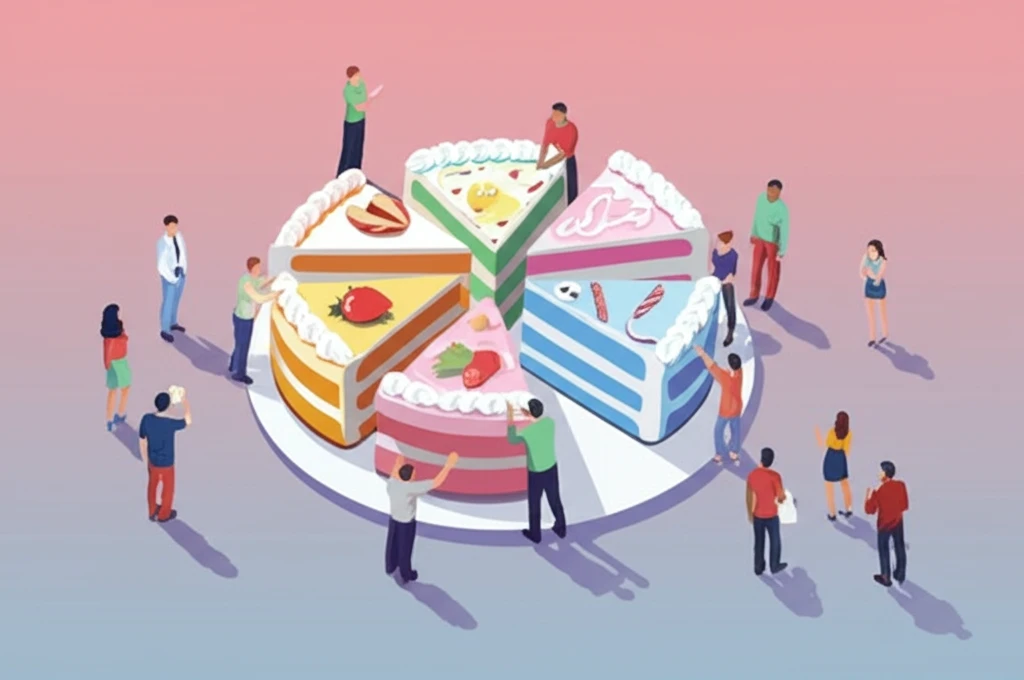
The Cake is a Lie? Unveiling the Secrets of Fair Resource Allocation
"Discover how mathematicians and computer scientists are tackling the complexities of fair division, ensuring everyone gets a piece they'll love."
Imagine a group of siblings inheriting a vast estate, filled with fertile land and potential coal mines. How do you divide it fairly when one sibling is a farmer and the other runs a coal factory? This classic problem highlights the complexities of resource allocation, where 'fairness' isn't always as simple as splitting everything equally. This challenge is at the heart of a field called 'cake-cutting,' a surprisingly deep area of study blending mathematics, economics, and computer science.
Cake-cutting, at its core, deals with dividing a divisible resource (the 'cake') among multiple participants (the 'agents') who may have different values and preferences. While the term conjures images of birthday parties, the principles apply to a wide range of real-world scenarios, from dividing assets in a divorce to allocating time slots on a shared resource. The goal is to find an allocation that satisfies certain fairness criteria, ensuring everyone feels they've received their due.
Traditional methods often fall short when dealing with diverse preferences. Selling the entire resource and splitting the proceeds equally, while straightforward, may not maximize individual satisfaction. This is where the concept of 'strong proportionality' comes in, where each agent receives a piece they value strictly more than their proportional share. However, achieving this while maintaining connected pieces – ensuring each agent receives a single, contiguous chunk of the resource – presents a unique set of challenges.
What Makes Cake-Cutting So Hard? Exploring the Nuances of Fair Division

The beauty of cake-cutting lies in its ability to adapt to various fairness criteria. One of the most well known is 'proportionality'. This means that if you have 4 people dividing a cake, everyone should get at least 25% of the cake, according to their own valuation. But what if you want a better deal? That's where the idea of strong proportionality comes into play. It is where everyone gets a piece worth more than their fair share. The problem, then, is ensuring strong proportionality isn't always possible.
- Diverse Valuations: Each agent might value different parts of the resource differently. One person might cherish the fertile land, while another sees more value in the coal mining potential.
- Connectivity Constraints: Requiring each agent to receive a single, contiguous piece adds complexity. It’s much easier to give someone six separate 20-minute slots than a single two-hour slot. This is important when it comes to resources like time.
- Query Complexity: Finding the fairest division can be computationally expensive. Algorithms often rely on querying agents about their preferences, and minimizing the number of queries is crucial for efficiency.
The Future of Fairness: Applying Cake-Cutting to Real-World Problems
The research has shown how to approach the problem of fair resource allocation, but it's just the beginning. From dividing land to scheduling meeting rooms, the need for fair and efficient allocation mechanisms is ever-present. These algorithms can be used to ensure satisfaction and equity in many domains.
